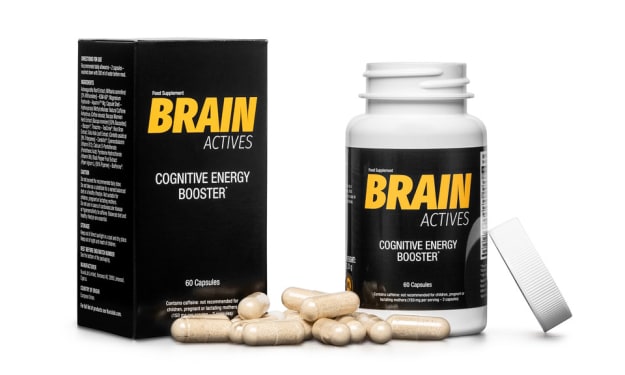7 Home Remedies for Knee Pain
Usually, knee pain does not need any help from doctors and most people can manage it themselves.

Usually, knee pain does not need any help from doctors and most people can manage it themselves.
Many of the chronic issues related to knee pain can also be resolved with home treatments.
The cause of the problem affects the knee pain treatment at some point. On the other hand, a variety of knee pain types can benefit from the following simple solutions.
1. Strengthening exercises
Physical therapists can assist individuals in determining the most appropriate workouts and programs for their individual needs.
Exercise that strengthens the quadriceps muscles, which are found in the upper legs, can aid in protecting the knee joint. The front and sides of the thighs are home to these muscles.
Here are some strategies for building up these muscles:
- Sit or lie down, straighten, and lift one leg.
- Step down once again and continue the step-ups by placing one foot up on a step and then the other.
- Take a seat, stand up, and then sit down again for a minute. Avoid using your hands for support and proceed slowly and deliberately.
- Squat down till your kneecaps cover your toes while holding a chair. Repeat ten times.
2. Medications
Medications such as non-steroidal anti-inflammatory drugs (NSAIDs) can relieve arthritis-related knee pain. While some of these require a prescription to be filled, others can be used over the counter at home.
The following medications may be used to manage pain:
- topical capsaicin
- non-steroidal anti-inflammatory drugs (NSAIDs)
- tramadol
- steroid injections into the joint
Duloxetine, an antidepressant, plus acetaminophen might be helpful.
Experts advise against using opioids — except tramadol.
Several of these drugs, such as the NSAIDs naproxen and ibuprofen, can be bought online or over-the-counter.
3. Protection, rest, ice, compression, and elevation (PRICE)
When a soft tissue injury, such as a sprain, causes modest knee pain, rest, ice, compression, and elevation may be helpful treatments.
By taking a break from the activity that initially injured the knee, for example, you can keep it from getting worse.
Resting can help tissues repair and lessen the chance of more injuries occurring. But it's not a good idea to cease moving altogether, as this might eventually cause muscle weakening and stiffness.
Ice can assist in lowering inflammation and edema. On the first day after the injury, it should be applied numerous times for 20 minutes while wrapped in a cloth. Avoid applying ice directly to the skin as this may cause additional harm.
For example, compression combined with knee support might improve comfort. Firm but not too tight should be the bandage or support.
Maintaining the leg elevated will promote blood flow and minimize edema. The knee should ideally be higher than the level of the heart.
4. Heat and cold
It's been suggested that applying heat or cold therapy can help relieve lower back pain and arthritis-related joint discomfort.
- Heat reduces stiffness by relaxing muscles and enhancing lubrication. Use a heating pad or a bottle of hot water.
- When wrapped in a cloth, ice can help with swelling, pain, and inflammation.
Some people use heat in the morning to help with mobility and in the afternoon to help with swelling reduction.
It's important to always test hot items before using them, particularly on elderly or hard-of-communicating individuals.
5. Tai chi
Tai chi is a type of meditation exercise; the advantages of exercise in and of itself have already been covered.
According to the results of a year-long study including 204 patients with osteoarthritis in the knee, tai chi may offer advantages over traditional physical treatment that are on par with or even higher. The participants' average age was sixty years old.
At 12 weeks, both groups showed improvements in their key outcome scores, and these improvements persisted throughout the program.
In addition, compared to those who received conventional physical treatment, practitioners of tai chi reported notable improvements in their physical elements of quality of life and depressive symptoms.
For those with OA of the knee, tai chi is a highly recommended type of exercise both the ACR and AF.
6. Medical marijuana
Interest in using cannabidiol (CBD), sometimes referred to as medical marijuana, as a remedy for a variety of health issues has increased since its recent approval.
Despite not being the psychoactive ingredient in marijuana, CBD does seem to have a variety of pharmacological effects.
According to research on animals, it might lessen joint pain because it
- prevents the signaling of the pain pathway.
- has anti-inflammatory properties
Although safety and efficacy in treating rheumatic disease have not been demonstrated in clinical trials, researchers advise against ruling it out as a potential treatment option in the future.
7. Apple cider vinegar and other foods
Some sites claim that the anti-inflammatory qualities of apple cider vinegar (ACV) can help reduce pain, including arthritis.
There isn't enough scientific data to back this up, though.
Other well-known recommendations for treating arthritis include:
- eating raw foods including collagen, gelatin, or pectin.
- Steer clear of dairy, acidic meals, and veggies that are considered nightshades, such as potatoes, eggplant, and tomatoes.
There isn't any proof that these are beneficial or even wise.
About the Creator
Amelia Grant
I am journalist, and blogger.






Comments
There are no comments for this story
Be the first to respond and start the conversation.